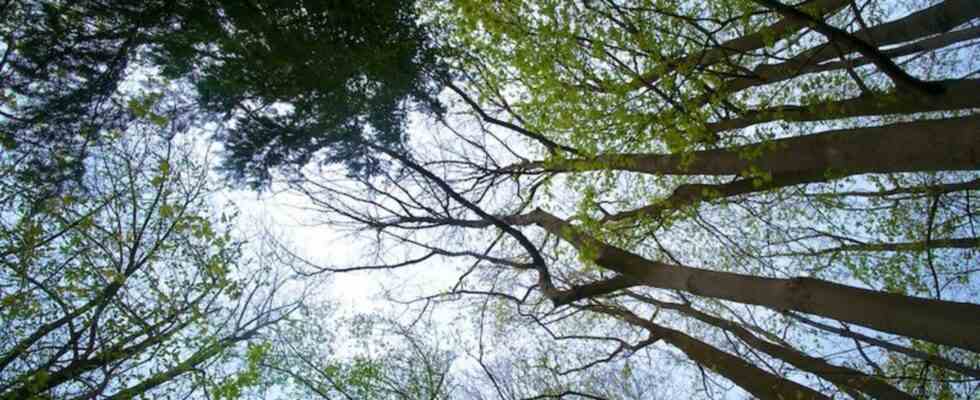environmental Protection
Summary of Arbor Day: The forests are doing badly
Germany’s forests are doing badly – now they are to be “rebuilt”. Photo: Carsten Hoefer/dpa
© dpa-infocom GmbH
Drought, storms and beetles have caused great damage to the forests in recent years. The afforestation will take years, even if the starting point is now a little more favorable.
The reforestation of the German forests, which have been severely damaged by drought and storms, is expected to take years.
This year, around 55,000 hectares are due for afforestation in the 16 countries, as the forest owners’ association AGDW announced on Arbor Day (April 25) on request. This means that this year young trees will only be sown or planted on some of the bare areas.
Because the Federal Ministry of Agriculture assumes in the forest status report published at the end of March that around 380,000 hectares nationwide will have to be reforested.
Better starting position this spring
The situation for the forest trees is somewhat better this spring, since the past year was less dry and the winter was rather wet. “The damage dynamics have decreased slightly,” said Josef Ziegler, the vice president of the forest owners. “If a normal summer follows, the forests will be able to recover a little.”
However, the development depends largely on the weather, as foresters and experts emphasize. In April, the first generation of bark beetles begins to fly, which infest spruce in particular and can quickly kill weakened trees. Should it be a dry year again, this would favor the spread of the beetles.
Damage regionally very different
Example North Rhine-Westphalia: In the largest federal state, 115,000 hectares of forest have fallen victim to drought and the bark beetle in recent years. According to the state forestry company Wald und Holz NRW in Münster, that is a good twelve percent of the forest area in North Rhine-Westphalia. “On the one hand, afforestation is in full swing,” says a spokesman. “On the other hand, we do not assume that the bark beetle calamity is over.”
According to the forest owners, the situation varies greatly from region to region. “The forest owners in the main damaged areas in North Rhine-Westphalia, Hesse, Saxony-Anhalt, Lower Saxony, Saxony, Thuringia and northern Bavaria are still struggling with the consequences of the three years of drought and the unpredictability of the development of the climate crisis,” says a spokeswoman. “Damage areas must be reforested, the concern of consequential damage such as renewed bark beetle infestation from May is great in these regions.”
The starting position is more favorable, especially in the south of Bavaria. The Bavarian State Forests are expecting a decrease in beetle damage in Bavaria this year.
But further north, the state forestry companies sound less optimistic. The winter storms also caused more damage there than in the south.
Trees infested by bark beetles must be felled and removed from the forest as quickly as possible, according to Wald und Holz NRW.
Bark beetle big problem
Then there are the bark beetles that overwinter in the ground – an estimated 1.3 million animals per hectare. “So there can be no talk of an all-clear,” says the spokesman. Bark beetles fly out from a temperature of 16.5 degrees. “200 bark beetles can kill a healthy spruce.”
Beetles and trees downed by storms are the current problem, but behind this lie the long-term changes in weather and climate that are affecting German forests. Climate scientists assume that the summers will become permanently drier and storms will occur more frequently and more severely.
Task: “rebuild” forests
This means that forest operations and forest owners nationwide are faced with the task of “converting” the forests – i.e. planting trees that can tolerate drought and, if possible, withstand strong gusts of wind better. In concrete terms, this means, among other things, replanting fewer spruce trees. In addition, foresters and forest scientists around the world are looking for tree species in temperate latitudes that are suitable for planting in Germany.
The costs of forest conversion are estimated to be in the tens of billions. Since many private forest owners have made losses in recent years, the forest owners are demanding state subsidies. “Many tree species will not survive the future climate,” says AGDW Vice Ziegler. “Mixed forests with heat-tolerant tree species must be started as quickly as possible.”

